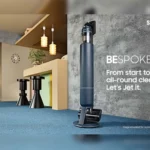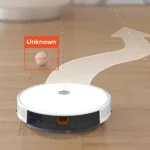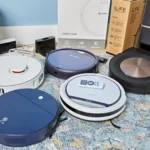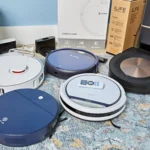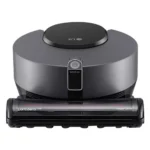Cleaning our homes has been a time-consuming and often dreaded task since the invention of the broom. Fortunately, the introduction of smart vacuum technology has made this chore much easier and more efficient. With advancements in artificial intelligence, navigation, and filtration systems, smart vacuums have become more than just a helpful tool for cleaning floors. But what does the future hold for this technology? What kind of innovation can we expect to see in the coming years? In this article, we’ll take a closer look at the current state of smart vacuum technology and explore the exciting possibilities that lie ahead.
The Current State of Smart Vacuum Technology
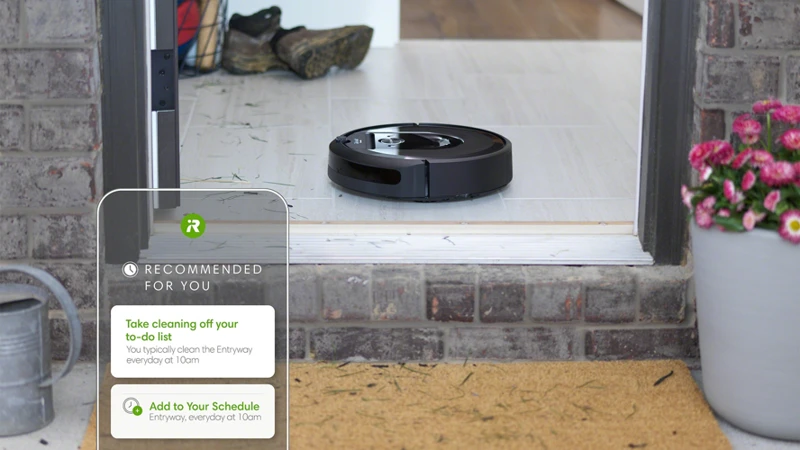
As technology is advancing at an unprecedented rate, smart vacuum cleaners have become an integral part of modern households. The current state of smart vacuum technology is characterized by several features that make them stand out from traditional vacuum cleaners. These features include robotic vacuum cleaners that can operate autonomously, mapping and navigation capabilities that enable smart vacuums to create maps of the cleaning area, and voice-activated controls that make cleaning even more convenient. To learn more about the pros and cons of robotic vacuum cleaners, follow this link.
1.1 Robotic Vacuum Cleaners
When it comes to smart vacuum technology, robotic vacuum cleaners (RVCs) are the most widely recognized and used devices. These intelligent devices have become increasingly popular in recent years and are quickly becoming a household staple.
The Advantages of Robotic Vacuum Cleaners
| Advantages | Explanation |
| Fully Automated Cleaning | RVCs are designed to independently navigate around your home, cleaning up dirt and dust as they move through each room. |
| Time Savings | With RVCs, you don’t have to spend time and effort dragging heavy equipment or endlessly going over the same spot to get the best clean. |
| Easy To Use | A major attraction of RVCs is their ease of use. Users can control their RVCs through smartphone applications or voice-activated control systems. |
| Customizable Cleaning Features | RVCs come with interchangeable brushes, adjustable suction power, and other customizable settings to fit your cleaning needs. |
| Avoidance of Obstacles | When RVCs encounter an obstacle or hazard, they will automatically adjust their movement and avoid damage. |
| Pet-Friendly Cleaning | RVCs are perfect for pet owners. They can pick up pet hair and dander, making keeping a clean home effortless. |
The Future of Robotic Vacuum Cleaners
Looking ahead, expect RVCs to become even more advanced. Updates such as increased battery life, improved suction power, and enhanced mapping capabilities will make cleaning even more effortless.
Keeping up with RVC maintenance is important to ensure that they are able to provide optimum cleaning results. Check out our article on Smart Vacuum Cleaner Maintenance Tips to keep your RVC running smoothly.
1.2 Mapping and Navigation
Mapping and navigation are vital components of smart vacuum technology. This feature enables smart vacuums to efficiently clean an area without bumping into obstacles or getting stuck in tight spots. Smart vacuums use a variety of sensors, cameras and lasers to scan the surrounding area and build a map of the room. The map is used to create a cleaning plan, which ensures that no spots are missed during cleaning.
Mapping and navigation technology has come a long way since the early days of robotic vacuums. Previously, robotic vacuums used random movement patterns, without any clear plan of the room. This often resulted in missed spots or inefficient cleaning. However, with advances in mapping and navigation technology, smart vacuums can now create a detailed map of the area and plan their cleaning route accordingly.
The technology used in mapping and navigation is constantly improving, with many smart vacuums now equipped with advanced sensors and cameras. These features enable smart vacuums to navigate more accurately, avoid obstacles more efficiently and provide a more thorough clean. Some models can even detect and avoid stairs or cliffs.
In addition to improving the cleaning performance of smart vacuums, mapping and navigation technology also makes life easier for users. With the ability to map an area, smart vacuums can be set to clean specific spots at specific times. This means you can have your smart vacuum set to clean your living room during the day, and your bedroom at night, without having to pick it up and move it yourself.
In addition to mapping and navigation, smart vacuums have a variety of features that make them highly sought after by consumers. Check out our article on the best smart vacuums for pet hair in 2021 to find out more about the benefits of this technology in the battle against pet hair. Alternatively, if you’re trying to choose between handheld vs stick vacuums, our article on handheld vs stick vacuums provides a detailed comparison of the two types of vacuums.
The mapping and navigation technology is just one of many features that make smart vacuums a popular choice for consumers. To learn more about how to choose the right smart vacuum for you, check out our guide on smart vacuum choosing tips. Additionally, if you’re curious about the environmental impact of smart vacuum cleaners, our article on the environmental impact of smart vacuums provides a detailed analysis.
1.3 Voice-Activated Controls
One of the major advancements in smart vacuum technology is the advent of voice-activated controls. With this feature, you can control your vacuum cleaner by simply giving it verbal commands. This is made possible with the incorporation of smart assistants such as Amazon Alexa or Google Assistant.
How does it work?
Using voice-activated controls allows you to turn on and off your vacuum cleaner, as well as initiate cleaning cycles, simply by speaking commands. All you need to do is to connect your smart vacuum cleaner to your smart assistant and use specific voice commands to perform various actions.
Benefits of voice-activated controls
One of the key advantages of voice controls is convenience. You no longer need to physically touch your vacuum cleaner or use a remote control to operate it. This feature is especially useful if you are busy doing other things and need to clean up quickly without interruption.
Voice commands give a further layer of accessibility, making it a good alternative to those with physical disabilities or mobility restrictions. For example, older adults who may not be as agile as they once were can control their vacuum cleaners without worrying about bending or stooping.
Another benefit is that voice-activated controls can save time. With a few words, you can initiate cleaning cycles without having to get up and press buttons, allowing you to move on to other tasks.
Finally, voice controls are a great way to impress guests! Imagine telling your vacuum cleaner to start cleaning while entertaining visitors. It’s a great conversation starter and adds a bit of fun to mundane tasks.
While the voice-activated controls feature is still relatively new, it is expected to become more refined and user-friendly in the future. The integration of AI with this feature could lead to even more intuitive and powerful voice commands.
If you want to learn more about smart vacuum technology advancements, take a look at our article on AI smart vacuum cleaners that can detect and avoid obstacles on their own. Additionally, find out how charging and battery management is being improved in smart vacuum cleaners.
The Future of Smart Vacuum Technology
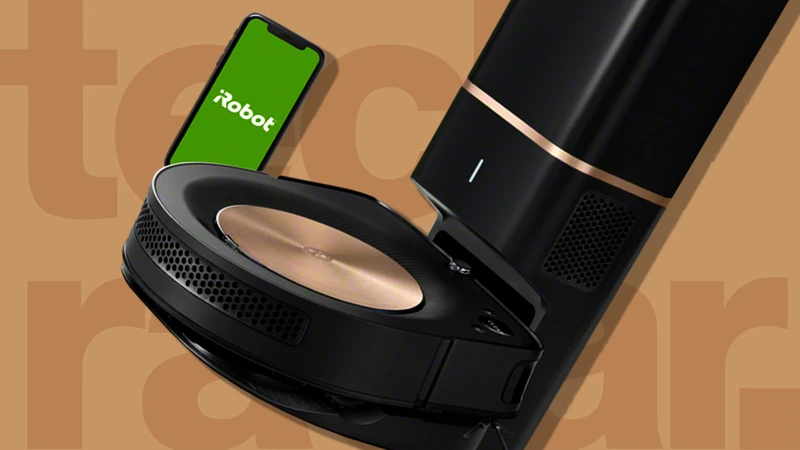
As we continue to advance technologically, the possibilities for smart vacuum technology seem almost limitless. With the current state of the industry already offering convenience and efficiency, the question arises: what’s next? In this section, we’ll explore some of the exciting developments on the horizon for smart vacuums, highlighting innovations such as artificial intelligence, autonomous emptying and charging, and advanced filtration systems. From environmental mapping to multi-room cleaning capabilities, the future of smart vacuums is looking brighter than ever before. So, what exactly can we expect? Let’s dive in.
2.1 Artificial Intelligence
As smart vacuum technology evolves, artificial intelligence is playing an increasingly important role in making these devices more efficient and effective. AI can help vacuum cleaners learn from their environment and adapt their cleaning patterns based on user preferences, making them more user-friendly and intuitive.
One example of this is the use of object recognition technology, which uses machine learning algorithms to identify and classify different objects in a room. By doing so, the vacuum can avoid obstacles and better navigate its surroundings, making for a more thorough cleaning experience.
Another application of AI in smart vacuums is the use of predictive analytics, which enables the device to learn from the user’s cleaning habits and predict when certain areas of the home will need to be vacuumed. This means that the vacuum can prioritize certain areas and adjust its cleaning schedule accordingly, saving time and energy.
To make AI work effectively in smart vacuums, it’s important to have access to a large and diverse dataset to inform the machine learning algorithms. Manufacturers are doing this by collecting data from users through their vacuum’s sensors and cameras, and using this to continuously improve the device’s performance.
The integration of AI into smart vacuum technology promises to make these devices more efficient and user-friendly than ever before, making cleaning less of a hassle and more of a breeze.
| Advantages of AI in Smart Vacuums | |
| 1. Object Recognition | – Avoids obstacles and better navigates surroundings |
| 2. Predictive Analytics | – Learns user’s cleaning habits and prioritizes cleaning schedule |
| 3. Improved Performance | – Access to a large and diverse dataset leads to continuous improvement of device’s performance |
2.2 Autonomous Emptying and Charging
One of the limitations of current smart vacuum technology is that they require manual intervention when it comes to emptying and charging. However, autonomous emptying and charging is a feature that’s likely to be prevalent in the future of smart vacuum technology.
This feature will allow smart vacuums to empty themselves into a separate bin or container once they’re full to capacity. They’ll then return to their charging dock and charge themselves without any need for human intervention. This is expected to be achieved by integrating sensors that will detect when the smart vacuum is full and when it has low battery levels.
Implementing autonomous emptying and charging will significantly improve the overall efficiency of smart vacuums. This is especially true in large households or commercial settings where the vacuum is constantly in use and requires frequent emptying and charging.
Below is a table summarizing the advantages of autonomous emptying and charging in smart vacuum technology.
| Advantages of Autonomous Emptying and Charging |
|---|
| Efficiency – The vacuum can work for longer periods without interruption, leading to increased productivity and time savings. |
| No Human Intervention – The vacuum can operate without the need for human intervention, which reduces the need for staff. |
| Better Maintenance – Autonomous emptying and charging leads to a more consistent maintenance schedule, which can prolong the lifespan of the vacuum. |
| Cost-effective – Companies can save on labor costs by automating tasks that would otherwise require human intervention. |
Autonomous emptying and charging is a highly anticipated feature in the future of smart vacuums. Implementing this feature will significantly improve the overall efficiency, productivity, and maintenance of smart vacuums.
2.3 Environmental Mapping and Analysis
Smart vacuum technology is advancing at a rapid pace, and one of the most exciting developments on the horizon is the ability of these devices to provide environmental mapping and analysis. With the help of sensors and other advanced technologies, smart vacuums are becoming capable of mapping out the layout of rooms and homes, identifying areas that require more cleaning, and even checking for environmental factors that may affect air quality.
This technology has the potential to revolutionize the way we clean our homes by providing greater efficiency and precision in our cleaning routines. Environmental mapping and analysis can help to identify high-traffic areas, so that the vacuum can prioritize cleaning these spots more frequently. It can also detect specific areas that require deeper cleaning or special attention, such as pet hair, dust or allergens.
This technology can provide insight into the overall health of your home’s environment. By detecting and analyzing air quality, a smart vacuum can suggest actions to improve the quality of the air, such as increasing ventilation or using air purifiers. These recommendations can ultimately lead to a healthier living environment for you and your family.
In addition, smart vacuums with environmental mapping and analysis capabilities can optimize energy efficiency. By recognizing which areas of the home require more or less cleaning, the vacuum can adjust its cleaning patterns accordingly, which reduces energy consumption and prolongs battery life.
Environmental mapping and analysis is an exciting development in smart vacuum technology that has the potential to revolutionize the way we clean and maintain our homes. By providing detailed insights into the layout and environment of our living spaces, these devices can help to optimize energy usage, improve cleaning efficiency, and promote healthier living conditions.
2.4 Multi-Room Cleaning Capabilities
Smart vacuums have made cleaning more efficient by automatically mapping and navigating their way around the house. However, the current generation of smart vacuums can only clean one room at a time before being manually moved to the next room. This is about to change with the emergence of multi-room cleaning capabilities.
Multi-Room Cleaning Capabilities refer to smart vacuums that can navigate from room to room while cleaning without intervention from the user. These vacuums can create an internal map of the house and use it to plan the most efficient route while taking into account obstacles, such as furniture and pets.
To achieve multi-room cleaning capabilities, smart vacuums use advanced sensors and machine learning algorithms that allow them to recognize different rooms and adjust cleaning modes accordingly. This means that the vacuum’s suction power and brush settings can be adjusted based on the type of flooring and the amount of dirt in each room.
Another feature of multi-room smart vacuums is their ability to resume cleaning after recharging. For example, if the vacuum’s battery runs low during cleaning, it can automatically return to its charging dock and resume cleaning once the battery is fully charged.
This new technology will save users valuable time that would have otherwise been spent moving the vacuum from room to room. Additionally, multi-room smart vacuums will allow more precision cleaning and improved overall cleanliness of homes.
Below is a table summarizing the benefits of Multi-Room Cleaning Capabilities:
| Benefits of Multi-Room Cleaning Capabilities |
|---|
| Efficient cleaning of multiple rooms without user intervention |
| Recognition of different rooms and adjustment of cleaning modes accordingly |
| Saves time by not requiring manual intervention between rooms |
| Improves overall cleanliness of homes |
As technology continues to improve, it is likely that multi-room cleaning capabilities will become a standard feature of all smart vacuums. This will undoubtedly make cleaning more efficient and convenient, allowing users to focus on other important tasks while their smart vacuum takes care of the cleaning.
2.5 Advanced Filtration Systems
One of the key features that smart vacuum technology of the future is poised to incorporate is advanced filtration systems. With the increasing concerns about air quality and the harmful effects of allergens and pollutants, manufacturers are looking for ways to enhance the filtration capabilities of their products.
Current Challenges with Filtration Systems
One of the challenges that current vacuum cleaners face is the inability to effectively capture small particles, such as dust and pollen. This limitation can be especially problematic for people with allergies or respiratory issues. While HEPA filters have been a popular solution for capturing small particles, they are not always effective and can be costly to replace.
The Future of Filtration Systems
Technology advancements are already being made in this area, with new filtration systems that promise to capture even the smallest particles. These advanced filters include:
| Advanced Filtration System | Description |
|---|---|
| Nanofiber Filters | These filters use nanotechnology to capture particles as small as 0.1 microns, making them more effective than traditional HEPA filters. |
| Photo-Catalytic Filters | These filters use UV light to convert pollutants into harmless substances, improving the overall air quality of a home. |
| Molecular Filters | These filters use activated carbon to capture odors, chemicals and other harmful substances, providing a comprehensive filtration solution. |
In addition to incorporating these advanced filters, manufacturers are also exploring the use of smart sensors to monitor air quality levels in real-time. This would enable the vacuum to automatically adjust its filtration settings to optimize its performance based on the air quality readings.
The Benefits of Advanced Filtration Systems
The benefits of these advanced filtration systems are numerous. Not only do they provide a more comprehensive solution for capturing small particles and improving air quality, but they also reduce the need for frequent filter replacements, ultimately saving users money in the long run. Additionally, the implementation of smart sensors can provide a more personalized cleaning experience and enhanced performance.
As smart vacuum technology continues to evolve, advanced filtration systems will undoubtedly play a crucial role in ensuring that these products provide users with the cleanest and healthiest home environment possible.
2.6 Energy Efficiency
The future of smart vacuum technology is all about energy efficiency. With the world becoming more conscious about power consumption and the effects of climate change, it’s important for smart vacuums to be designed with this in mind. Here are some of the ways that energy efficiency can be improved:
- Low Power Consumption: Smart vacuums can be designed to consume less power than their predecessors. This can be achieved through the use of efficient motors and upgraded battery technology. Vacuums can also be designed to automatically switch to low power mode when not in use.
- Solar-Powered Vacuums: With the advancement of solar technology, it’s possible to have vacuums that are powered by solar panels. This will reduce the reliance on electricity and make vacuums more environmentally friendly.
- Auto-Charging: Vacuums can be designed to automatically return to their charging stations when the battery is running low. This eliminates the need for constant monitoring and manual charging, thus reducing unnecessary energy consumption.
- Smart Scheduling: Smart vacuums can be programmed to clean at specific times when energy consumption is at its lowest. This ensures that energy is used efficiently and effectively.
- Efficient Cleaning Technology: New cleaning technologies can help to reduce energy consumption. For instance, vacuums that use suction to pick up dirt and debris use less energy than those that rely on beating or sweeping mechanisms.
Improving the energy efficiency of smart vacuums not only benefits the environment, but it also saves homeowners money in the long run. As the world becomes more energy-conscious, it’s important for smart vacuum manufacturers to prioritize energy efficiency in their designs.
2.7 Modular Design
As technology advances and consumer needs evolve, smart vacuums are expected to have a modular design that allows for customizability and flexibility. This means that users can easily interchange the different parts of their vacuum, such as the suction power, brush roll, or filter, to cater to their specific cleaning needs.
One key benefit of modular design is that it can improve the longevity of the vacuum. Instead of having to replace the entire vacuum when a part breaks down or becomes outdated, users can simply replace the faulty or outdated part. This not only saves money, but also reduces waste and contributes to more sustainable living.
The table below provides a breakdown of some potential modular components that could be included in future smart vacuums:
| Component | Description |
|---|---|
| Suction Power Module | Users can switch between different suction power options depending on the type of surface they are cleaning. For example, they might choose a stronger suction power for high-pile carpets and a lower suction power for hardwood floors. |
| Brushroll Module | Users can customize the brush roll for different surfaces, such as a rubber brush roll for pet hair or a bristle brush roll for deep cleaning carpets. |
| Filter Module | Users can choose from various filter options, including HEPA filters for allergy and asthma sufferers or activated carbon filters for odor control. |
| Battery Module | Users can easily replace the battery module when it is no longer holding a charge or when they need a longer battery life for a specific cleaning job. As batteries continue to improve, users may also be able to upgrade to more powerful, longer-lasting batteries over time. |
| Dustbin Module | Users can select from different sizes of dustbins depending on the size of their home or the frequency of cleaning. Additionally, they can choose from different materials, such as plastic or metal, based on their personal preferences. |
With a modular design approach, smart vacuum technology can become more personalized to the user’s specific needs, extending the lifespan of the vacuum, and thus making it more eco-friendly.
Modular design is a significant step towards a more sustainable and customizable future for smart vacuums. With multiple modular components in play, it is easy for users to replace or change the components based on their personal requirements, improving the vacuum’s performance, and ultimately contributing to the user’s lifestyle.
The Benefits of Smart Vacuums
Smart vacuums are the epitome of modern technology that has revolutionized the way we clean our homes. They offer a host of benefits that make them stand out from traditional vacuum cleaners. From saving time to improving air quality, these devices are transforming the cleaning experience. In this section, let’s take a closer look at some of the key benefits of smart vacuums that are enhancing the day-to-day lives of users.
3.1 Time-Saving
When it comes to cleaning the home, time is a valuable commodity. Smart vacuums offer a time-saving solution that frees up hours in your busy schedule. With their advanced features, these appliances can clean your home while you take care of other tasks.
How Smart Vacuums Save Time
One of the main ways that smart vacuums save time is through their ability to automate the cleaning process. With traditional vacuum cleaners, you have to manually move them around the room, which can be time-consuming. Smart vacuums, on the other hand, are equipped with sensors and mapping technology that allow them to navigate your home and clean autonomously. This means you can set them to work and then go about your day without having to worry about vacuuming.
Smart vacuums can also save you time by cleaning more efficiently than traditional vacuums. They utilize advanced filtration systems and powerful suction to pick up dirt and debris in a single pass, saving you from having to repeatedly vacuum the same spot. Additionally, with their advanced mapping systems and multi-room cleaning capabilities, smart vacuums can clean your entire home without stopping or requiring you to relocate them manually.
The Benefits of Time-Saving Smart Vacuums
The benefits of time-saving smart vacuums are numerous. Firstly, they give you more time to focus on other tasks, allowing you to be more productive and efficient in your day-to-day life. You won’t have to worry about vacuuming, which frees up your weekends to spend time with your family, friends or enjoy your hobbies.
Because smart vacuums can clean more efficiently than traditional vacuums, you won’t have to spend as much time cleaning in the first place. This can lead to a cleaner and more organized home and will ultimately make it easier for you to keep your space tidy.
Smart vacuums are a time-saving solution that is becoming increasingly popular for homeowners. With their advanced features and efficient cleaning capabilities, they can help you free up more time in your day and keep your home looking its best.
3.2 Convenience
One of the primary benefits of smart vacuums is the convenience they offer to users. With traditional vacuum cleaners, users had to set aside time out of their busy schedules to clean their homes manually. However, with the advent of smart vacuum technology, cleaning has become more convenient than ever before.
Smart vacuums are equipped with features such as scheduling and remote controls, which allow users to program the vacuum to clean their homes even when they are not present. This means that users can set their vacuum to clean at specific times or intervals, and the vacuum will do the job on its own. This feature is particularly useful for people who have busy work schedules and do not have time to clean their homes on a regular basis.
Additionally, smart vacuums are designed to be easy to operate, with simple touch screens and voice commands. Some models even come with smartphone apps that allow users to control the vacuum from anywhere. This means that users can simply tap a few buttons on their phone or speak a command, and the vacuum will start cleaning the house.
Another convenience feature of smart vacuums is their ability to adapt to different floor types and room layouts. These vacuums use sensors and mapping technology to navigate around the room, avoiding obstacles and adapting to different surfaces. This means that users do not have to manually adjust the settings of their vacuum cleaner as they move from one room to another.
Convenience is a key feature of smart vacuum technology. These machines are designed to make cleaning more efficient and easy by offering features such as scheduling, remote controls, and intuitive operation. With these benefits, users can rest assured that their homes will be clean and tidy, without having to spend their valuable time and energy in manual cleaning.
3.3 Precision Cleaning
Smart vacuums are designed for precision cleaning that leaves no dirt or dust behind. They are equipped with advanced sensors that detect the position and type of dirt present on the floor. This information is then used to plan the best path and cleaning method to ensure a thorough cleaning process.
Table 1: Types of Sensors in Smart Vacuum Cleaners
| Type of Sensor | Function |
|---|---|
| Optical Sensors | Detect surface and adjust suction power |
| Ultrasonic Sensors | Measure distance from the floor and detect obstacles |
| Cliff Sensors | Detect edges and prevent falls |
| Bumper Sensors | Prevent collision with obstacles |
The precision cleaning ability of smart vacuums is also enhanced by algorithms that enable them to recognize complex patterns and areas that need more attention. This ensures that even the tiniest specks of dirt are removed from the floor.
Smart vacuums can also clean specific areas using boundary markers or virtual walls. This feature is particularly useful when cleaning around delicate objects, pet bowls, or areas with loose cables.
The precision cleaning feature of smart vacuums eliminates the need for manual cleaning, saving time and effort. It also ensures that all surfaces are cleaned evenly, which contributes to a healthier living environment.
3.4 Improved Air Quality
One of the biggest benefits of smart vacuum technology is the improvement in air quality that it provides. Thanks to advanced filtration systems and other features, smart vacuums can remove dust, debris, and other allergens from the air in your home or office. This can help to reduce the risk of respiratory problems and other health issues caused by poor air quality.
Here are some ways that smart vacuums can improve air quality:
- HEPA filtration: High-Efficiency Particulate Air (HEPA) filters are some of the most effective filters available. They can capture particles as small as 0.3 microns in size, including dust, pollen, and pet dander. Smart vacuums equipped with HEPA filters can trap these particles, preventing them from being circulated back into the air.
- Activated carbon filters: Activated carbon filters can absorb volatile organic compounds (VOCs), such as those found in cleaning products and air fresheners. Smart vacuums with these filters can reduce the presence of these harmful chemicals in your home.
- Cyclonic suction: Cyclonic suction technology can help to separate larger particles, such as pet hair and dust, from the air. This can prevent them from being released back into the air when the vacuum is emptied, improving indoor air quality.
- Regular cleaning: Smart vacuums can be programmed to clean on a regular schedule, ensuring that air filters and other components are regularly maintained. This can help to keep the vacuum operating at peak performance and reduce the risk of releasing dusty, dirty air back into your home.
By incorporating these features, smart vacuums are able to provide a significant improvement in air quality that traditional vacuums simply can’t match. So, if you’re concerned about the air quality in your home or office, a smart vacuum may be a smart investment.
Conclusion
In conclusion, it is clear that the future of smart vacuum technology is incredibly promising. With the advancements in artificial intelligence, autonomous emptying and charging, environmental mapping and analysis, multi-room cleaning capabilities, advanced filtration systems, energy efficiency, and modular design, it is clear that smart vacuums will be able to provide even greater convenience, precision cleaning, and improved air quality to users.
One of the key benefits of smart vacuums is their ability to save users time. With the advanced capabilities of these vacuums, users will no longer need to spend hours manually vacuuming their homes. Instead, they can simply set their smart vacuum to work, and focus on other tasks or relax while their home is cleaned.
Additionally, smart vacuums offer improved convenience. With voice-activated controls and the ability to be controlled remotely via a smartphone app, users can easily start their vacuum while away from home or schedule cleanings at their convenience.
Another key benefit of smart vacuums is their precision cleaning capabilities. With advanced mapping and navigation, these vacuums can recognize different areas and adjust their cleaning patterns accordingly. They can also detect and avoid obstacles, preventing damage to furniture or other items in the home.
Furthermore, smart vacuums are able to improve air quality. With advanced filtration systems, these vacuums can capture even the smallest particles, such as pollen and dust, ensuring that the air in the home is cleaner and healthier to breathe.
Overall, the benefits of smart vacuums make them a worthwhile investment for those looking to improve their home cleaning routine. As technology continues to advance, it will be fascinating to see how smart vacuum technology evolves to offer even more advanced capabilities to users.
Frequently Asked Questions
1. How does a smart vacuum differ from a regular vacuum?
A smart vacuum uses advanced technology, such as artificial intelligence and autonomous mapping, to automatically clean your home without the need for human intervention. It can also be controlled with voice commands or a mobile app.
2. Can a smart vacuum be used on all types of flooring?
Yes, most smart vacuums are designed to work on all types of flooring, including hardwood, tile, and carpet.
3. Does a smart vacuum require Wi-Fi to operate?
While a smart vacuum can be operated without Wi-Fi, many of its advanced features, such as voice activation and remote control through a mobile app, require a Wi-Fi connection.
4. How long does the battery last on a smart vacuum?
The battery life varies depending on the brand and model, but most have a runtime of 60-120 minutes before needing to be recharged.
5. Will a smart vacuum replace the need for manual cleaning?
A smart vacuum can greatly reduce the need for manual cleaning, but it may not be able to clean every nook and cranny in your home. It’s still important to do occasional deep-cleaning and maintenance.
6. Can a smart vacuum be scheduled to clean at specific times?
Yes, many smart vacuums have a scheduling feature that allows you to set specific times for it to clean on a daily or weekly basis.
7. How much does a smart vacuum cost?
The cost of a smart vacuum varies depending on the brand and features, but they typically range from $200 to $1000.
8. Is a smart vacuum loud?
Most smart vacuums are designed to operate quietly, but some models may produce more noise than others. It’s best to check the decibel level before purchasing.
9. Can a smart vacuum be used to clean pet hair?
Yes, many smart vacuums come with specialized brushes and filters that can effectively clean pet hair from carpets and upholstery.
10. Are smart vacuums environmentally friendly?
Smart vacuums are designed to be energy-efficient and use less power than traditional vacuums. They also often come with reusable filters, which reduces waste.

